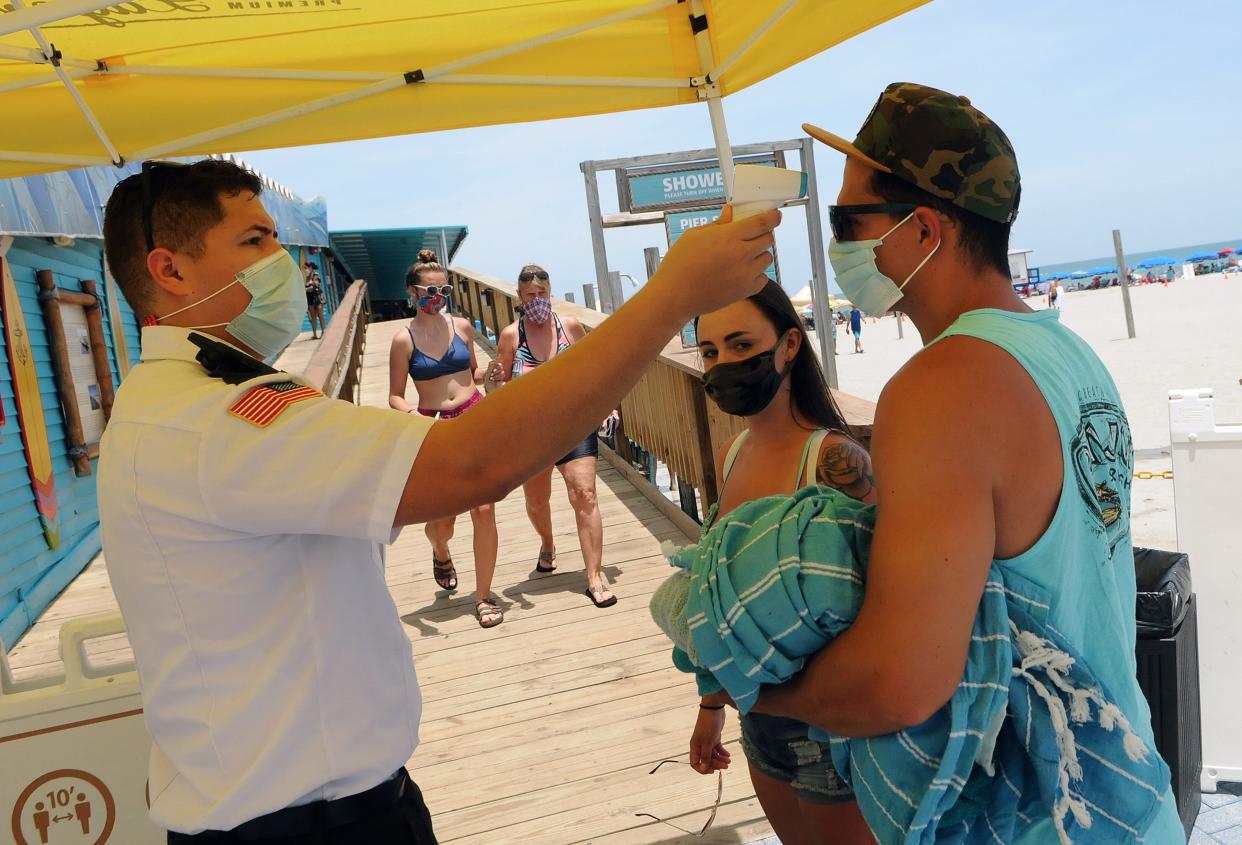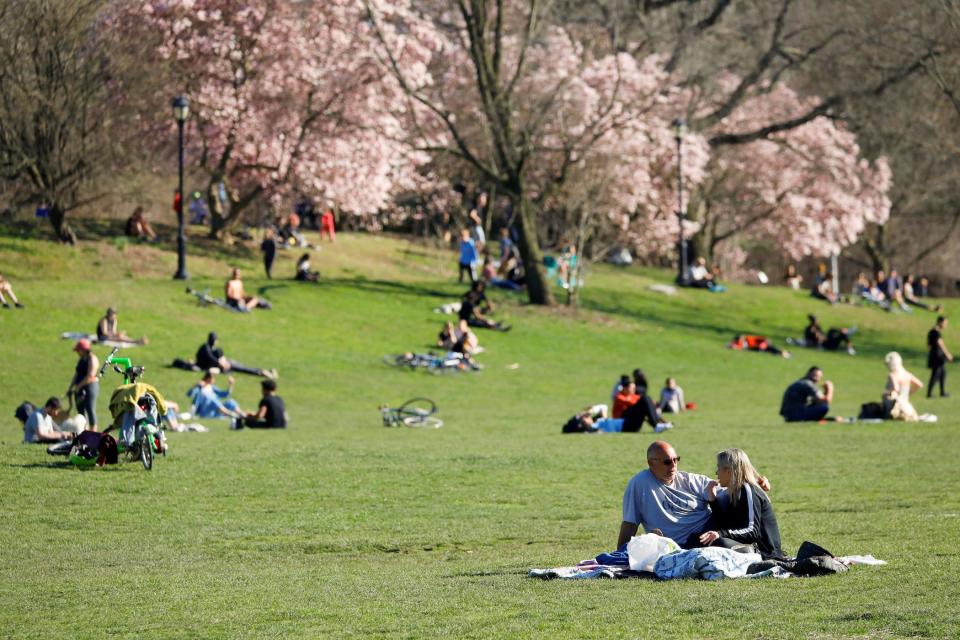The pandemic is 'going to be one big wave,' according to the WHO. Here's why the coronavirus isn't seasonal like the flu.

Paul Hennessy/NurPhoto via Getty Images
Because flus and colds are less prevalent during the summer, many people — including President Trump — hoped that warmer weather would stymie the coronavirus' spread.
But according to the World Health Organization, the coronavirus is "behaving differently" and is not seasonal.
The pandemic is "going to be one big wave," the WHO said.
The coronavirus isn't seasonal yet because very few people are immune to it, so it spreads easily regardless of whether it has ideal climate conditions.
President Donald Trump offered an optimistic prediction five months ago: The coronavirus would disappear with the advent of warmer weather.
The logic was that because flus and common colds retreat during the summer, the coronavirus might, too. But according to the World Health Organization, that's a false hope.
"People are still thinking about seasons. What we all need to get our heads around is this is a new virus," Margaret Harris, a WHO spokesperson, said in a Tuesday briefing.
"Even though it's a respiratory virus, and even though respiratory viruses in the past did tend to do this, you know, different seasonal waves, this one is behaving differently," she added. "This virus likes all weather."
The recent surge of cases in the southern US offers a demonstration of the coronavirus' lack of seasonality: Average temperature highs in states with large outbreaks have ranged from 80 to 106 degrees Fahrenheit.
That means the second, perhaps more severe wave of infections that experts predicted we'd see in the fall and winter may not happen.
Instead, Harris said, the pandemic is probably "going to be one big wave."
Seasonality comes into play after a large chunk of the population is immune to a virus
There's an obvious reason the coronavirus can spread rapidly no matter the season, according to Rachel Baker, a researcher at Princeton's Environmental Institute: "We're at the start of pandemic, when a new virus is emerging into a population that hasn't had it before," she told Business Insider. "So a lack of population immunity becomes a key driver of spread, and climate doesn't really matter very much at first."

Jeffrey Collins/AP
Baker recently simulated the effects of climate on the spread of the coronavirus in cities around the world, based on how the coronaviruses that cause common colds spread in different climates and seasons.
Her team's results, published in May in the journal Science, showed that warm weather only curbs a virus' spread after a large chunk of the population becomes immune or resistant to infection.
"Think of it like a sliding scale: As population immunity builds up, you see a bigger climate signature in controlling spread," Baker said.
For now, our lack of immunity to the new virus gives it "a temporary but important advantage," according to epidemiologist Marc Lipsitch.
"In simple terms, viruses that have been around for a long time can make a living — spread through the population — only when the conditions are the most favorable, in this case in winter," Lipsitch wrote in a March article for Harvard University, referring specifically to the flu.
Never-before-seen viruses, by contrast, "spread outside the normal season for their longer-established cousins," he added.

It's possible, however, that the coronavirus will "settle into that classic seasonal pattern with a peak in winter months" after about two to three years — once a vaccine is developed and distributed, Baker said.
Temperature and humidity can affect the coronavirus' spread
Respiratory viruses like the flu are seasonal because cooler temperatures help harden a protective gel-like coating that surrounds the virus while it's in the air. A stronger shell ensures it can survive long enough to travel from one person to the next.
But that sheath dries out faster in warmer temperatures.

Research published last month revealed that warmer temperatures and lower humidity can truncate how long the new coronavirus survives on surfaces, which may in turn hinder spread. That could partially explain why New York City had a higher growth rate of new infections compared to Singapore in March, the scientists said, though other factors like testing and contact tracing likely played a role as well.
Similarly, an April study found a link between the virus' lifespan and the surrounding temperature. At 39 degrees Fahrenheit, the coronavirus lasted up to two weeks in a test tube. When the temperature was turned up to 99 degrees Fahrenheit, that lifespan dropped to one day.
Additional (though preliminary) research suggests that for each degree temperature rises and each percentage point humidity increases, the average number of people a coronavirus patient infects goes down.

Still, the impacts of temperature and climate on the virus' spread are ultimately negligible in the absence of efforts to flatten the curve.
"To the extent that there are any seasonal effects, they're washed over by these much stronger, broader effects of whether we're controlling it — like how good a job we're doing at masking," Tom Frieden, former director of the Centers for Disease Control and Prevention, told The Wall Street Journal earlier this month.
This story was originally published July 14, 2020. It has been updated with new information from the WHO.
Read the original article on Business Insider

